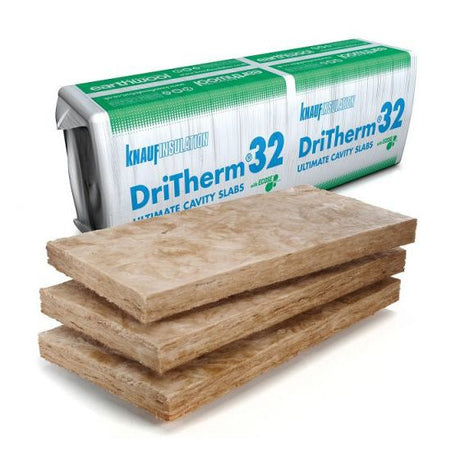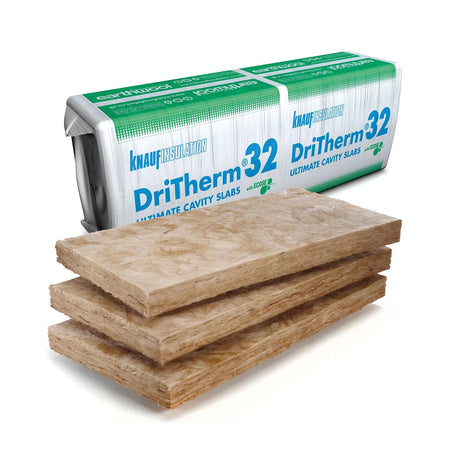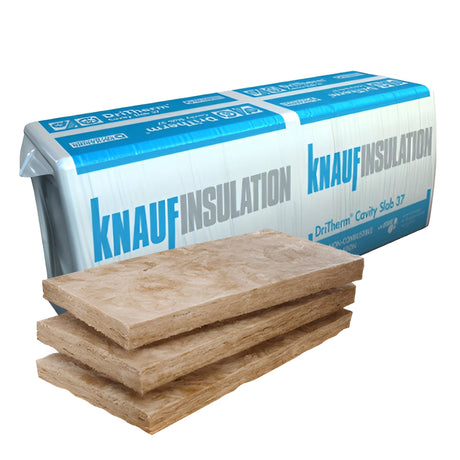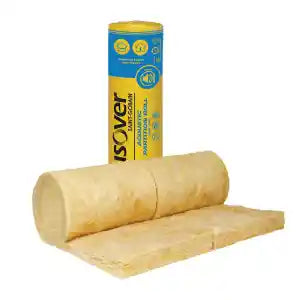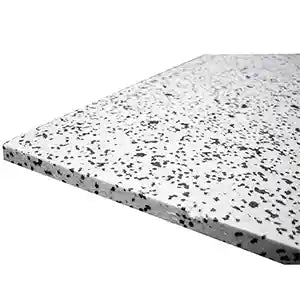Knauf
100mm Knauf Dritherm 32 Mineral Wool Cavity Wall Insulation - 3.28m² (6 Slabs/Pack)
£33.35 Ex VAT£40.02 Inc VATUnit price£0.00 Inc VAT/UnavailableKnauf
125mm Knauf Dritherm 32 Mineral Wool Cavity Wall Insulation - 2.18m² (4 Slabs/Pack)
£28.33 Ex VAT£34.00 Inc VATUnit price£0.00 Inc VAT/UnavailableKnauf
150mm Knauf Dritherm 32 Mineral Wool Cavity Wall Insulation - 2.18m² (4 Slabs/Pack)
£34.51 Ex VAT£41.41 Inc VATUnit price£0.00 Inc VAT/UnavailableKnauf
50mm Knauf Dritherm 37 Mineral Wool Cavity Wall Insulation - 6.55m² (12 Slabs/Pack)
£22.44 Ex VAT£26.93 Inc VATUnit price£0.00 Inc VAT/UnavailableKnauf
75mm Knauf Dritherm 37 Mineral Wool Cavity Wall Insulation - 4.37m² (8 Slabs/Pack)
£17.40 Ex VAT£20.88 Inc VATUnit price£0.00 Inc VAT/UnavailableKnauf
85mm Knauf Dritherm 37 Mineral Wool Cavity Wall Insulation - 4.37m² (8 Slabs/Pack)
£19.62 Ex VAT£23.54 Inc VATUnit price£0.00 Inc VAT/UnavailableKnauf
100mm Knauf Dritherm 37 Mineral Wool Cavity Wall Insulation - 6.55m² (12 Slabs/Pack)
£33.83 Ex VAT£40.60 Inc VATUnit price£0.00 Inc VAT/UnavailableKnauf
100mm Knauf Dritherm 32 Mineral Wool Cavity Wall Insulation - 20 Packs (65.6m²) (6 Slabs/Pack)
£650.00 Ex VAT£667.00£780.00 Inc VAT£800.40Unit price£0.00 Inc VAT/UnavailableKnauf
100mm Knauf Dritherm 32 Mineral Wool Cavity Wall Insulation - 35 Packs (114.8m²) (6 Slabs/Pack)
£1,100.00 Ex VAT£1,167.25£1,320.00 Inc VAT£1,400.70Unit price£0.00 Inc VAT/UnavailableKnauf
125mm Knauf Dritherm 32 Mineral Wool Cavity Wall Insulation - 20 Packs (43.6m²) (4 Slabs/Pack)
£550.00 Ex VAT£566.60£660.00 Inc VAT£679.92Unit price£0.00 Inc VAT/UnavailableKnauf
125mm Knauf Dritherm 32 Mineral Wool Cavity Wall Insulation - 35 Packs (76.3m²) (4 Slabs/Pack)
£933.33 Ex VAT£991.55£1,120.00 Inc VAT£1,189.86Unit price£0.00 Inc VAT/UnavailableKnauf
150mm Knauf Dritherm 32 Mineral Wool Cavity Wall Insulation - 15 Packs (32.7m²) (4 Slabs/Pack)
£500.00 Ex VAT£517.65£600.00 Inc VAT£621.18Unit price£0.00 Inc VAT/UnavailableKnauf
150mm Knauf Dritherm 32 Mineral Wool Cavity Wall Insulation - 30 Packs (65.4m²) (4 Slabs/Pack)
£975.00 Ex VAT£1,035.30£1,170.00 Inc VAT£1,242.36Unit price£0.00 Inc VAT/UnavailableKnauf
50mm Knauf Dritherm 37 Mineral Wool Cavity Wall Insulation - 40 Packs (262m²) (12 Slabs/Pack)
£850.00 Ex VAT£897.60£1,020.00 Inc VAT£1,077.12Unit price£0.00 Inc VAT/UnavailableKnauf
75mm Knauf Dritherm 37 Mineral Wool Cavity Wall Insulation - 40 Packs (174.8m²) (8 Slabs/Pack)
£658.33 Ex VAT£696.00£790.00 Inc VAT£835.20Unit price£0.00 Inc VAT/UnavailableKnauf
85mm Knauf Dritherm 37 Mineral Wool Cavity Wall Insulation - 40 Packs (174.8m²) (8 Slabs/Pack)
£741.67 Ex VAT£784.80£890.00 Inc VAT£941.76Unit price£0.00 Inc VAT/UnavailableKnauf
100mm Knauf Dritherm 37 Mineral Wool Cavity Wall Insulation - 15 Packs (98.25m²) (12 Slabs/Pack)
£491.67 Ex VAT£507.45£590.00 Inc VAT£608.94Unit price£0.00 Inc VAT/Unavailable


